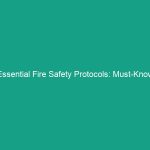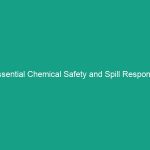Good Morning Team
Today, we’re diving into a crucial topic that affects all of us: What Can Hurt Me Today? Essential Tips to Avoid Critical Risks. Understanding the potential Hazards we face daily is vital for ensuring our Safety and well-being at work. By being aware and proactive, we can prevent accidents and injuries. Let’s explore this important subject together.
Understanding What Can Hurt Me Today
When we talk about “What Can Hurt Me Today,” we’re referring to the various risks and Hazards that can impact our Safety during our daily operations. These can range from physical dangers like machinery and tools to less visible risks such as ergonomic issues and mental stress. It’s essential to recognize that even routine tasks can pose significant risks if we’re not vigilant.
One common misconception is that only high-risk jobs are dangerous. In reality, every workplace has its hazards, and understanding these can make a significant difference in our safety. It’s not just about the obvious dangers; it’s about being aware of our Environment and the potential risks that come with it.
Key Hazards, Risks, and Safety Considerations
Here are some specific hazards you should be aware of:
- Slips, Trips, and Falls: One of the most common causes of workplace injuries. Ensure walkways are clear and use proper footwear.
- Manual Handling: Lifting or carrying heavy items can lead to serious injuries. Always use correct lifting techniques.
- Machinery Risks: Operating machinery without proper Training or Safety Measures can be deadly. Always follow safety protocols.
- Electrical Hazards: Exposed wires or faulty equipment can cause severe injuries. Regularly inspect electrical tools and equipment.
- Ergonomic Risks: Poor workstation setup can lead to chronic pain and injury. Adjust your workstation to fit your needs.
Ignoring these risks can lead to severe consequences such as injuries, lost workdays, or even permanent disability. It’s essential to be aware of these hazards and take steps to mitigate them.
Best Practices, Procedures, & Actionable Advice
To minimize risks, here are some Best Practices you can implement in your daily routine:
1. Conduct Regular Safety Checks
Before starting your tasks, take a few minutes to scan your work area for potential hazards. Ensure that all tools and equipment are in good condition and that the workspace is clean.
2. Use Personal Protective Equipment (PPE)
Always wear appropriate PPE for your tasks. This includes gloves, helmets, eye protection, and hearing protection. Make it a habit to check that your PPE is in good condition before use.
3. Follow Safety Protocols
Adhere to all safety protocols and Procedures laid out for your tasks. This includes not taking shortcuts and reporting any unsafe conditions immediately.
4. Take Breaks and Stay Hydrated
Fatigue can increase the likelihood of accidents. Ensure you take regular breaks and drink plenty of water to stay alert and focused.
5. Participate in Safety Training
Engage in safety training sessions and Toolbox Talks. These are excellent opportunities to learn about new Safety Measures and refresh your knowledge on existing protocols.
Real-World Incident Case Study
Let’s take a look at a real-world incident to highlight the importance of safety. A worker in a manufacturing plant sustained serious injuries when they attempted to clear a jammed machine without following the lockout/tagout procedure. This incident could have been avoided had the worker followed the safety protocols and waited for assistance.
This case illustrates that safety procedures are not just guidelines; they are essential practices that protect us. Always remember: Safety First.
Regulations, Standards, and Compliance
Familiarize yourself with relevant safety Regulations, such as OSHA Standards. These regulations are designed to protect workers by ensuring safe work environments. Compliance is not just a legal obligation; it’s a moral one. Adhering to these standards helps prevent injuries and creates a culture of safety.
Employee Engagement & Discussion
Now, let’s open the floor for discussion. I’d like to hear your thoughts:
- What safety challenges have you encountered related to the risks we discussed?
- Are there any additional hazards you think we should address?
- How can we improve our safety practices as a team?
Your insights are invaluable in creating a safer work environment. Let’s share our experiences and learn from each other.
Conclusion & Key Takeaways
In summary, understanding the question What Can Hurt Me Today? is crucial for our safety. We’ve identified key hazards, discussed Best Practices, and emphasized the importance of compliance with safety regulations.
Remember, safety is a shared responsibility. By taking proactive steps and engaging in discussions, we can all contribute to a safer workplace. Thank you for your attention and commitment to safety. Let’s make today a safe day!


